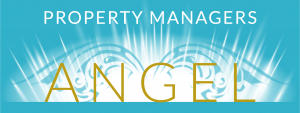The Healthy Homes Standards officially became law on 1 July 2019 and introduced specific and minimum standards for heating, insulation, ventilation, moisture ingress and drainage, and draught stopping in rental properties.
The Standards aimed to ensure that landlords who are responsible for maintaining and improving the quality of their rental properties have healthier, safer properties for their tenants, making it easier for tenants to keep their homes warm and dry for their families.
Rather than the standards coming into force in full as of 1 July 2019, a phased approach has been taken to introducing them. So, what has this meant for private landlords?
What Should I Have Done Already?
As of 1 July 2019, landlords should have:
- Installed ceiling and underfloor insulation that meets the Residential Tenancy Act requirements in all rental homes where it is reasonably practicable to install.
- Included a signed insulation statement with all tenancy agreements covering what insulation the property has, where it is, and what type it is.
- Sign statements of intent to comply with the Healthy Homes standards in any new, varied, or renewed rental contracts.
- Started keeping records that demonstrate compliance with any Healthy Homes Standards that apply or will apply during a tenancy.
What Do Landlords Need to Do Next?
- From 1 December 2020, landlords must include a statement of their current level of compliance with the Healthy Homes Standards in most new or renewed tenancy agreements.
- From 1 July 2021, private landlords must ensure their rental properties comply with the rest of the Healthy Homes Standards within 90 days of any new or renewed tenancy.
- From 1 July 2024, all rental homes must comply with the Healthy Homes Standards in their entirety.
What Are The Implications for Missing Deadlines?
As of now, by law, private landlords should have ensured that any rental properties they own have insulation that fully meets the Residential Tenancy Act requirements, and have included the appropriate statements in tenancy agreements as evidence of that.
Also, a statement of intent to comply with the Healthy Homes Standards should be included in any new or varied contracts. If work is being done towards meeting other elements of the Standards, appropriate records should be kept showing compliance with the Standard.
If these steps have not yet been taken, landlords could face fines of up to $4,000 if they are taken to the Tenancy Tribunal. As of February this year, over 120 cases had already been heard, with over $124,000 in fines issued to landlords who had failed to insulate rentals or provide accurate insulation statements.
With the 1 December 2020 deadline looming for Healthy Homes Compliance Statements, as well as the 1 July 2021 deadline for the full list of Healthy Homes Standards regulations to be met, it is more important than ever for landlords to get ahead of the deadlines and ensure you are not leaving these crucial matters to the last minute.
Our experienced team of property managers are well versed in navigating rental laws and legislation and can assist you in understanding the Healthy Homes Standards and their requirements. Advise on trades if you need work carried out to get your property compliant, and can help with the record-keeping, statements and tenancy agreement matters as well.
Contact us today for an obligation-free consultation.

